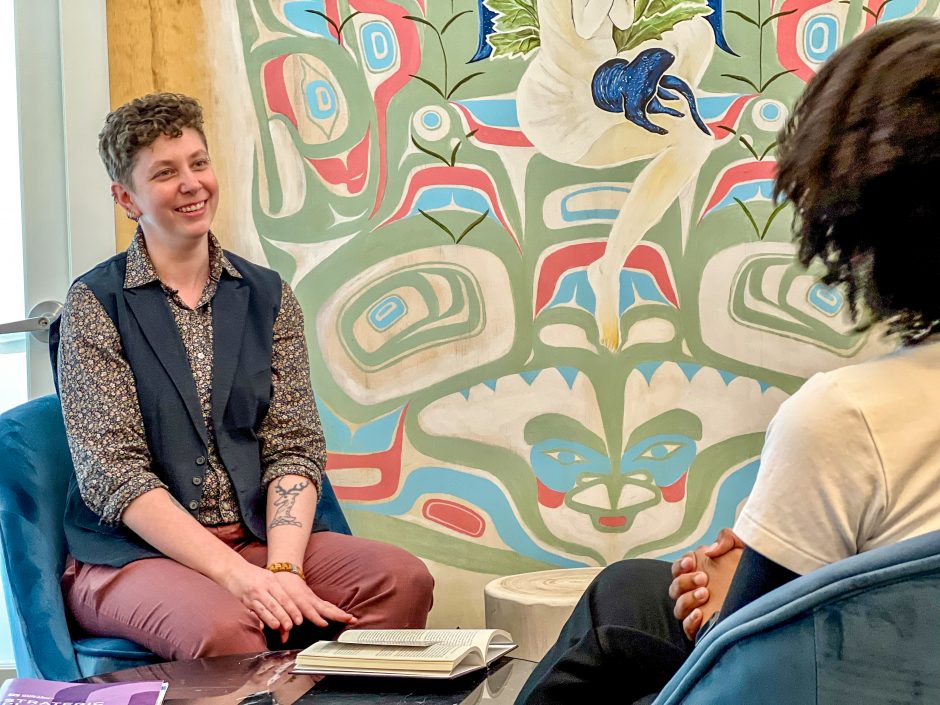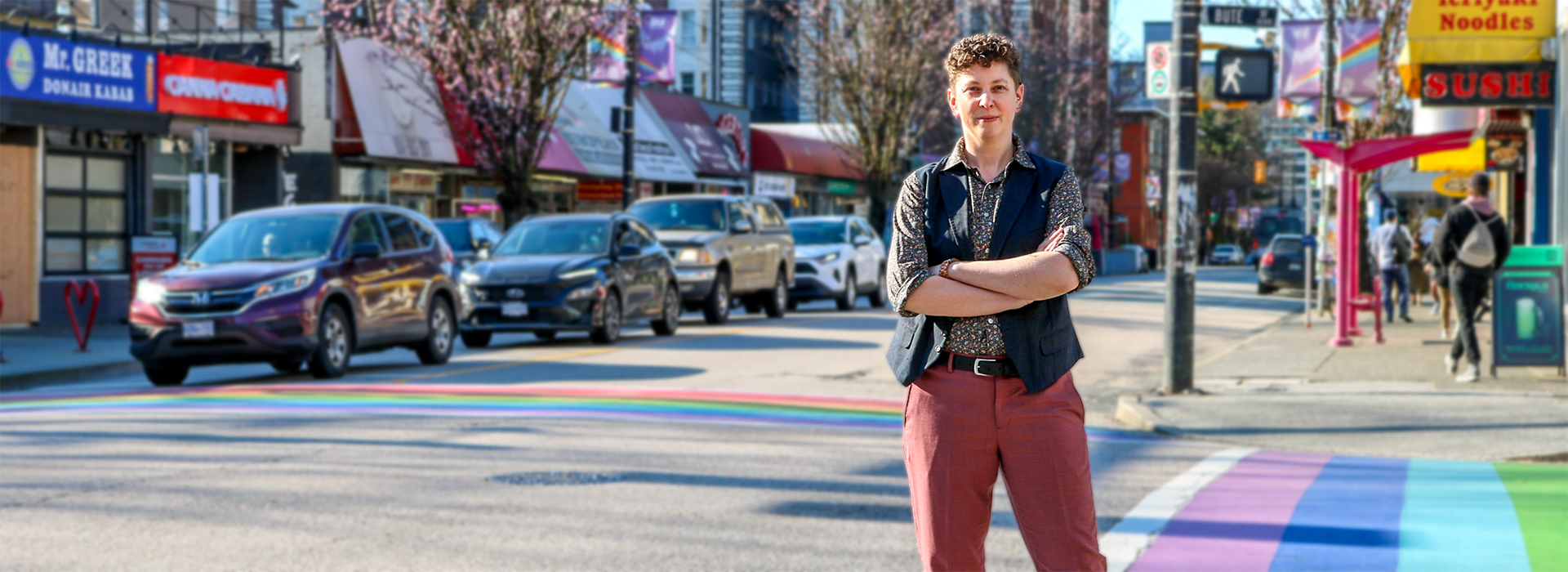
Trans-inclusive reproductive health care
Dr. A.J. Lowik is working to shape more trans-inclusive, gender-affirming reproductive health care for British Columbians.
For trans people, finding inclusive health services and care providers who understand gender health issues is deeply important. However, navigating a system designed around the needs of cisgender patients can come with a range of challenges.
UBC postdoctoral fellow Dr. A.J. Lowik is working to break down those barriers. As a scholar at the Faculty of Medicine’s Centre for Gender and Sexual Health Equity, they’re studying trans people’s health and experiences accessing care in the reproductive and sexual health space.
In a new book, Trans People and the Choreography of Reproductive Healthcare: Dancing Outside the Lines, Dr. Lowik documents the lived experiences of fourteen trans people in B.C. as they seek reproductive health services. Using dance as a metaphor, Dr. Lowik explores the barriers trans people face and the adaptive strategies they employ in pursuit of care that is competent, safe and affirming.
We spoke with Dr. Lowik about their new book and how their work is helping shape more trans-inclusive, gender-affirming care for British Columbians.
What motivated you to write this book?
This book is the culmination of my passion for reproductive health and how trans people fit into reproductive health care spaces. That passion began during my undergraduate degree while working at an abortion clinic with a “women only” employment policy. That policy raised many questions for me, not only because I had begun exploring my identity as a nonbinary, agender person, but also because I wondered about how such a space could deliver care to trans people.
Since then, I’ve pursued graduate studies to study various aspects of trans people’s reproductive lives, health and experiences of care. I’ve also been working to provide evidence-based training to reproductive healthcare providers so they can deliver more trans-inclusive, gender-affirming care.

How would you describe the book?
The book examines the experiences of trans people navigating reproductive health care and how they traverse spaces that aren’t necessarily designed with them in mind. It draws on data from interviews and participatory photography with fourteen trans people from the Greater Vancouver Area and West Kootenays regions of British Columbia. I use dance as a metaphor to describe how trans care is choreographically delivered in a system designed around cisgender people, and also, to capture the improvisational labour that trans people do in accessing that care.
Why use dance as a metaphor?
As a former ballet and contemporary dancer, I was really drawn to dance metaphors. A lot of research in this space documents the negative experiences of trans people, and I didn’t want to focus just on that. Improv and choreography allowed me to document, in a very holistic way, the norms and assumptions that are built into reproductive health care spaces, and as a result, the work that trans people must do to adapt those spaces and services for their needs.
What do those adaptation strategies look like?
The book documents over a dozen strategies that trans people use to improvise and suture together aspects of care to fit their needs. This can include deciding when to disclose — and when to conceal — their identity; or deciding whether and when to educate a healthcare provider. Participants described having to rely on their own knowledge, their peers and the internet, as well as needing to produce knowledge and resource materials themselves, when their providers were not well informed on trans-inclusive perinatal health care.

What do these experiences reveal about reproductive health care?
First and foremost, that reproductive health care is for the most part cisnormative and built around the needs of cisgender people. While we’ve made a lot of progress toward trans-inclusive health care, there are still a lot of assumptions around how trans people are expected to behave in relation to their reproduction.
We see, for example, trans folks who are expected to reject their reproductive capacity, or preserve it, based on assumptions about their gender identity. A menstruating nonbinary person, a pregnant trans man, a trans woman freezing her sperm – these people, and others, are largely unanticipated by healthcare providers. This impacts how reproductive health care is ultimately delivered and experienced by trans folks of all genders, who have a range of reproductive health needs.
I think what my research shows is that there is a place for education, policy and practice reform, and self-reflection. But ultimately, it’s only in dismantling oppressive cisnormative systems that we’re going to have truly inclusive care.
What’s next for your research?
My next focus is how healthcare providers are themselves choreographically constrained. I’m looking at how providers are trying to address gaps in their knowledge and create trans-inclusive, gender-affirming spaces, but are themselves caught up in this choreographic dance of oppressive systems. There are some truly fantastic trans healthcare providers out there, but many of the barriers to trans-inclusive care are much more structural, so I want to understand what those constraints are and how we can address them.
Published: March 28, 2024
